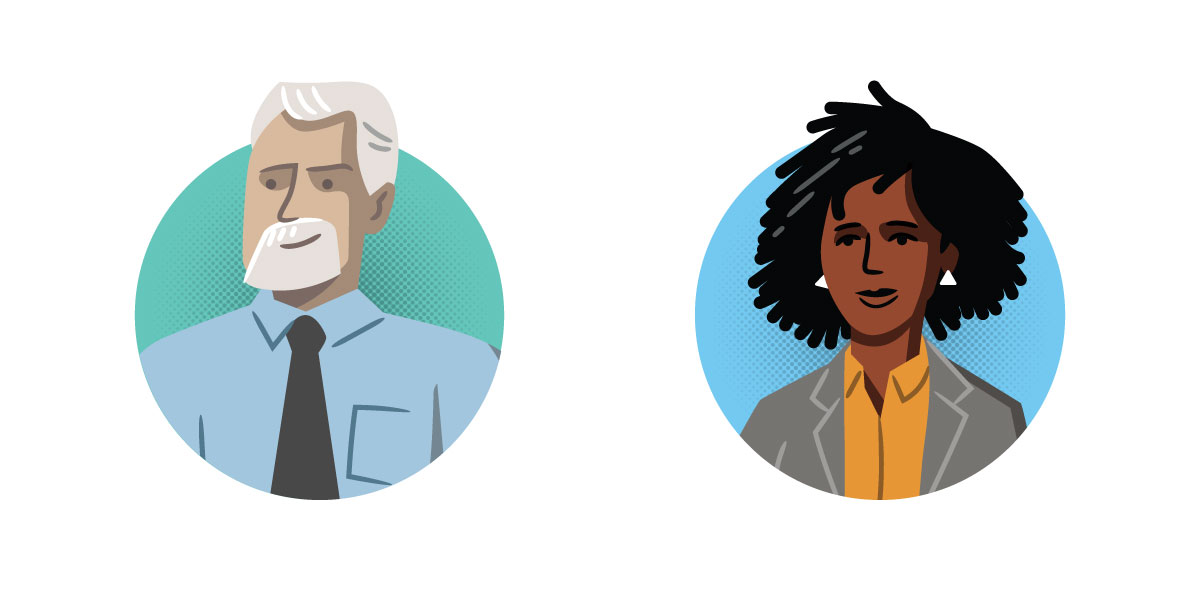
For marketers to be successful, they must know their audiences and target the different segments within that audience. If they didn’t, we as the potential consumers would receive the exact same communication from organizations, no matter our interests and buying intent. An unsegmented audience receives content that isn’t targeted and relevant. According to a HubSpot study, segmentation makes organizations 60% more likely to understand customers’ challenges, and 130% more likely to know their intentions. Segmenting based on personas provides companies 90% better knowledge about their audience. Why wouldn’t we, as Learning and Development Professionals, adopt the persona approach and use it as a tool to design targeted learning? The learner persona has launched many conversations over the past few years, but at times it feels like another item to check off before a project moves into the design phase. Remember — your design needs to start with the learner, not the content; and by you creating learner personas, you are in fact in the middle of designing outstanding learning experiences already.

Learner personas are fictitious characters that represent your typical learner. They offer learning designers opportunities to see our audience and to meet their needs based on preferences. Identifying personas helps us create effective, human-centered learning solutions and ultimately share the right content, at the right time and place.
Typically, a learner persona consists of demographic information such as role, department, level of education, location, and tenure. You will name the persona and make them come to life with a profile image. The information you capture will be more personal and will include your persona’s interests and goals outside of work. Some of this information is what a typical target audience analysis would uncover; personas differ because they present what your audience sees, hears, does, thinks, and feels every day. Learner personas enable you to add an emotional level to your target audience analysis — helping you understand the whole person, rather than simply a static, 2-dimensional learner. Once you have a better understanding of your learners’ emotional states, you can extract pain points and needs. These should not only refer to learning-related pain points and needs but be much broader to reflect the entire employee experience. Not everything is a training-related problem or need. Backing out to look at the bigger picture will encourage you to create a learning-cohesive environment.
Learner personas allow you to go beyond a traditional target audience analysis. Though you will not personalize every employee’s learning experience, personas get you much closer as you keep emotional states in mind. They are created only once for your entire organization and revisited as needed for individual projects. Ideally, you want to have 3 – 5 personas; this number might increase based on the size of your organization, your global footprint, or number of business units. Having too many personas in place can quickly over-complicate your learning designs.
Employee-led (bottom-up) experiences consider employees’ pre-existing tendencies for optimal working conditions. Personal (individual) experiences consider the psychological needs that must be met for someone to perform their work well. When these two intersect, we find human-centered experiences, which, according to Deloitte, motivate modern learners.
Learner personas are the first step in your journey to human-centered solutions. When you design learner personas, you identify the intersection of employee-led and personal experiences, helping employees answer the question: Am I making a difference at work? Learner personas allow us to connect work back to a deeper understanding of the worker, the work environment, and the bigger impact work has on helping employees achieve their aspirations.
When you create a learner persona, you shift the focus to the person who will interact with your clients, prioritizing their needs and aspirations — and pre-existing knowledge and time bandwidth — before your content needs. You put yourself into their shoes, move from an abstract idea to a defined representation of your learners, and remove the guess work from your design. In turn, you can better understand what intrinsically motivates your learners, design meaningful learning into their day-to-day, all while increasing engagement and productivity.
If you want to learn how to create learner personas and use them in your design, contact an Ardent Specialist today.
These Stories on Industry Insights
One of the most impactful emotional intelligence (EI) activities ...
I’m willing to bet that most of you ...
When someone asks me what my favorite season is, it’s an easy answer: football season. Aside from just being a sports fan in general, I love the competitive energy, the team spirit, and the ...
Copyright © 2025 Ardent Learning Inc. All Rights Reserved.